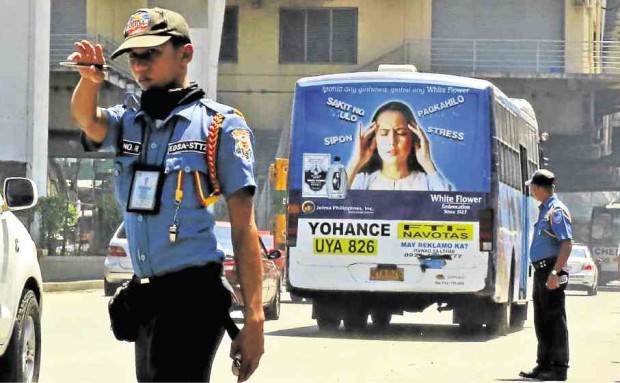Due to the deteriorating air quality in the metropolis, a pulmonologist suggested on Wednesday that traffic constables of the Metropolitan Manila Development Authority (MMDA) be deployed to the streets for a maximum of only two hours to prevent lung disease.
Dr. Paul Evangelista of the Lung Center of the Philippines said that based on studies, unprotected exposure to polluted air for over two hours could cause lung inflammation. Currently, the more than 2,300 traffic personnel of the MMDA are deployed throughout the capital in eight-hour shifts.
MMDA officer in charge and general manager Tim Orbos, meanwhile, said he would look into the doctor’s recommendation although he pointed out that the agency was already short-handed at the moment. Just the other day, he announced the deployment of over 500 men from volunteer groups to augment the agency’s traffic constables.
While acknowledging that his suggestion was impossible to implement for now because the MMDA was lacking in personnel, Evangelista said that at the very least, the agency’s personnel should be provided with masks to protect them from harmful pollutants.
In line with this, IDS Medical Systems Philippines Inc. turned over to the MMDA yesterday some 1,000 masks that could neutralize “90 percent of toxic gases and other pollutants.”
According to the World Health Organization, the safe air quality level is at 90 micrograms per cubic meter. But Dr. Loida Alzona, director of the MMDA’s health, public safety and environmental protection office, said the air quality index in the capital last year was at 120 micrograms per cubic meter.
According to Alzona, one of the areas of concern in Metro Manila is the intersection of Edsa and Taft Avenue in Pasay City which has a total suspended particulate concentrate of 400 micrograms per cubic meter.
This was due to the high number of public utility vehicles (PUVs) in the area, she said.
Alzona added that this was also one of the reasons why government should speed up the modernization of PUVs, particularly jeepneys.
